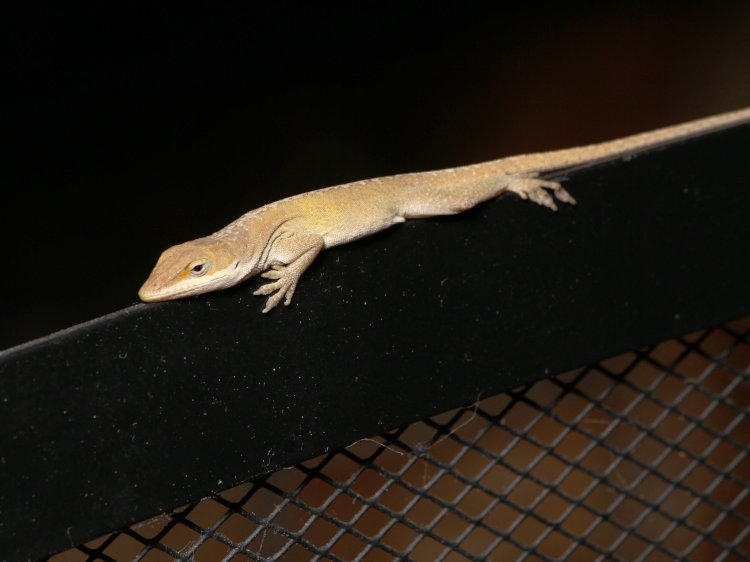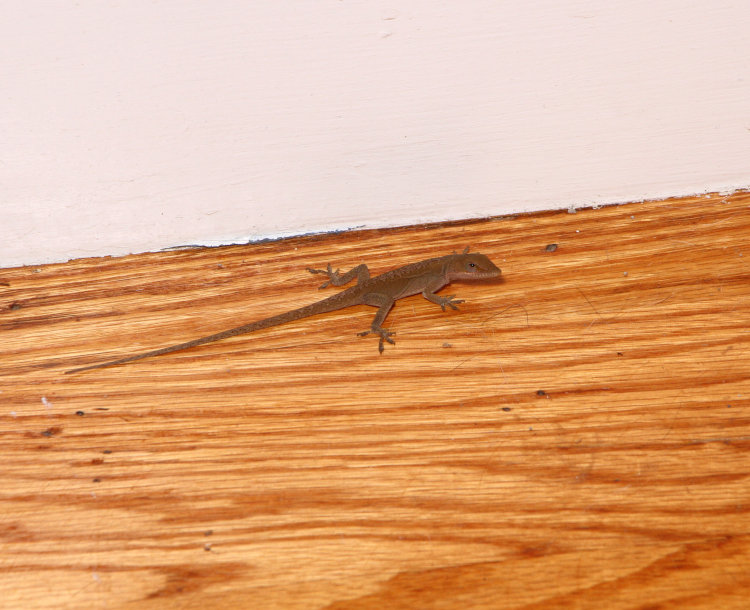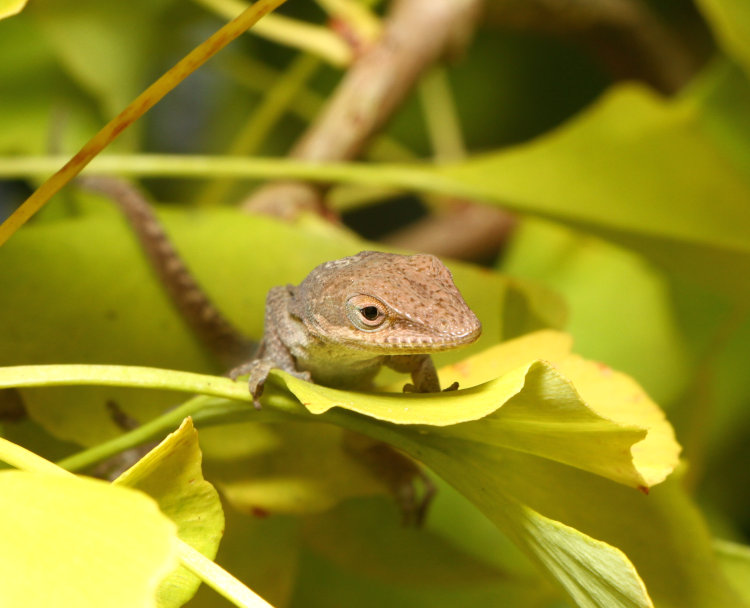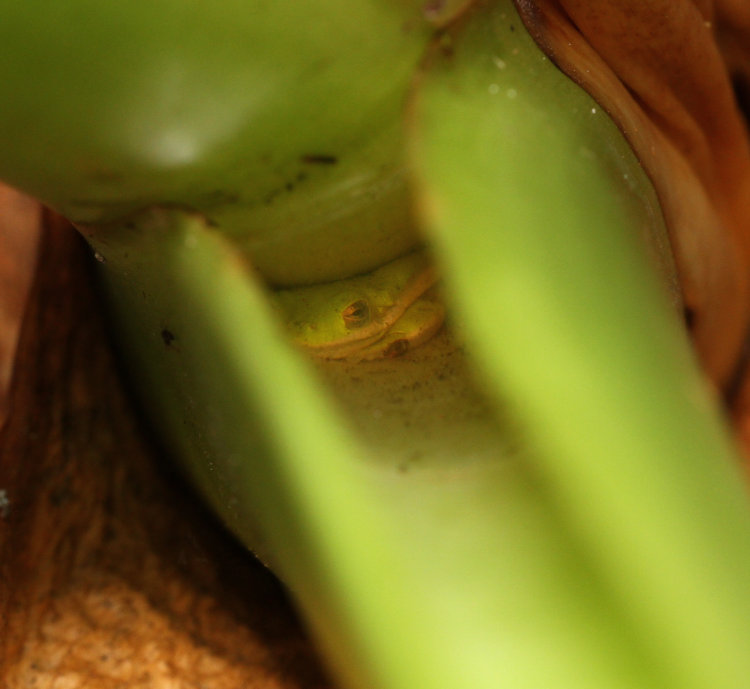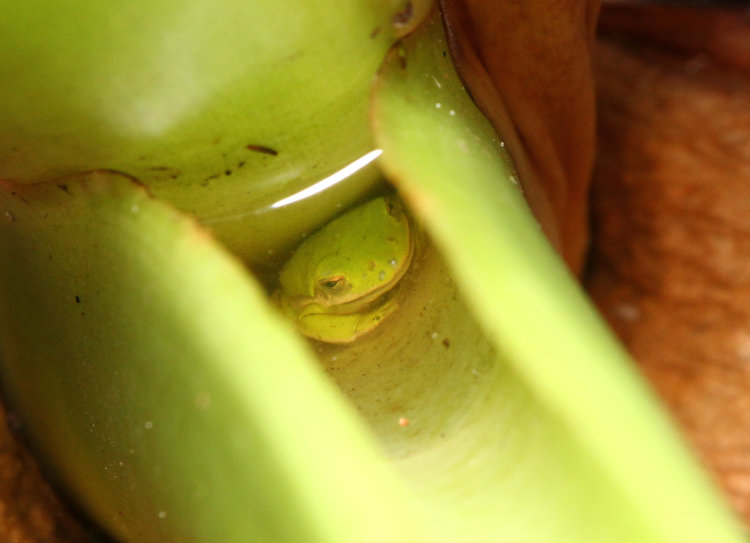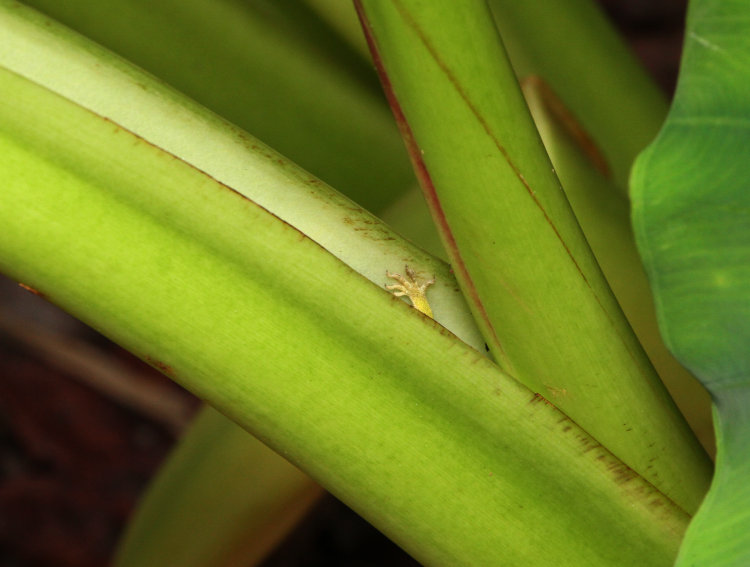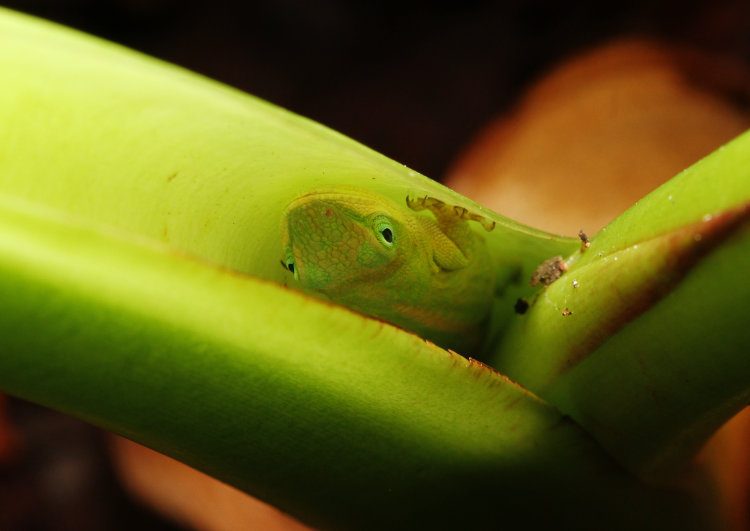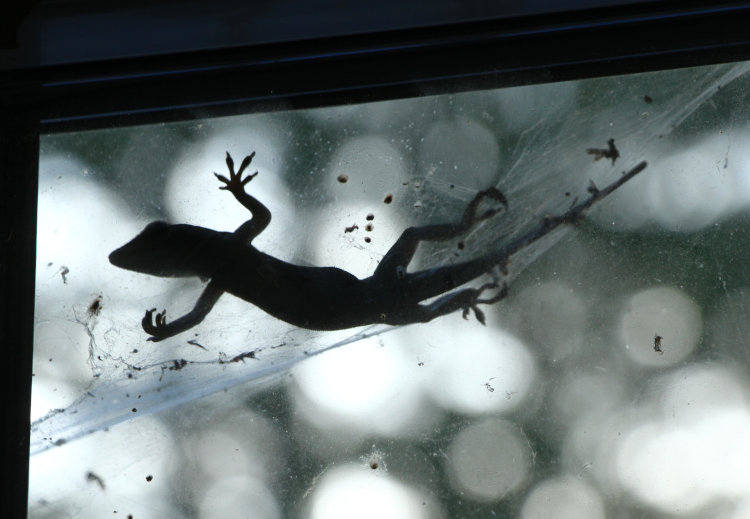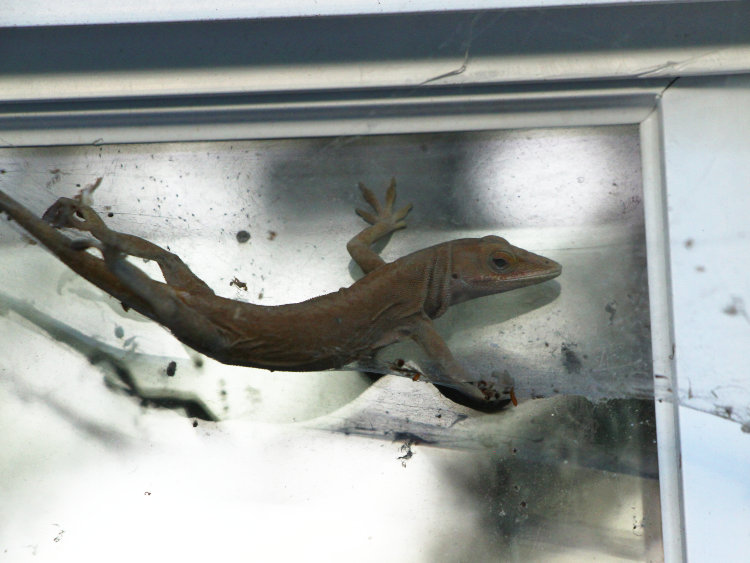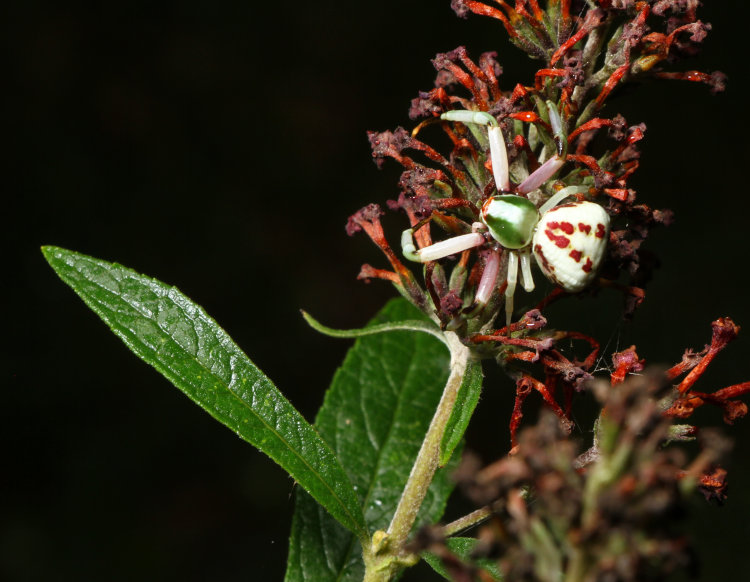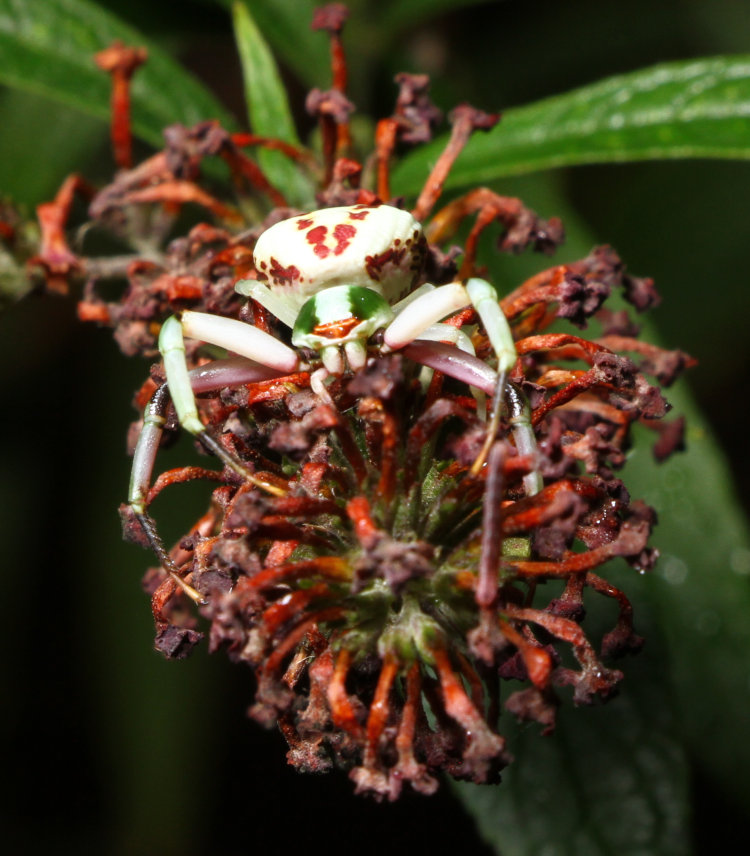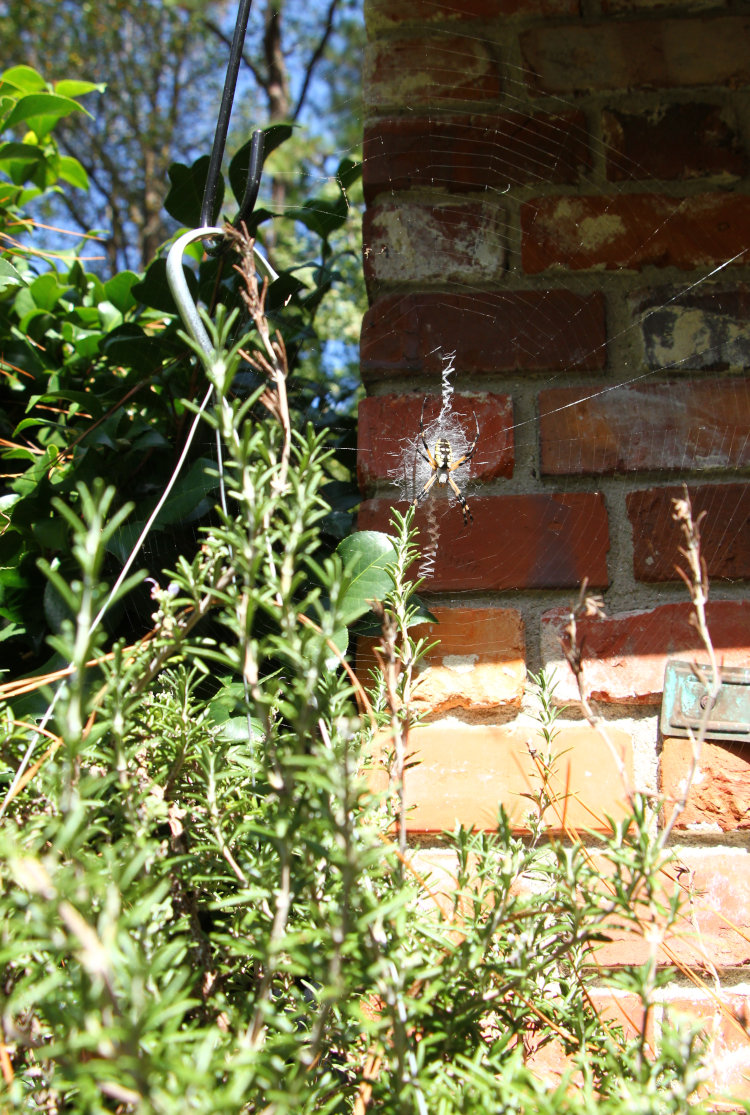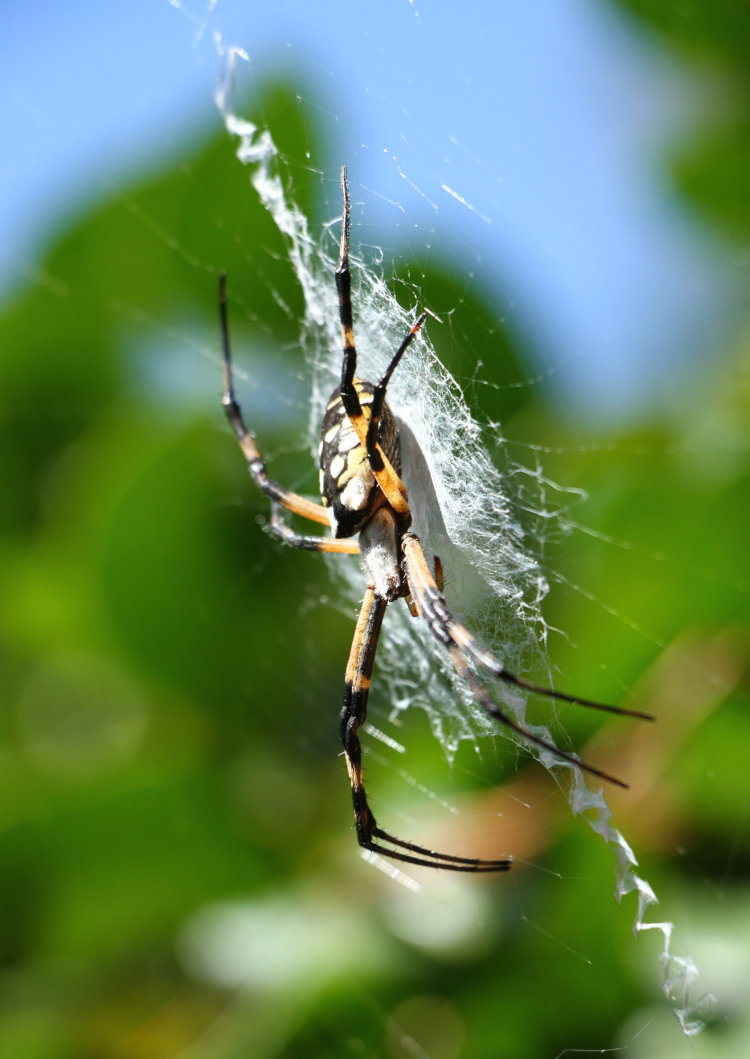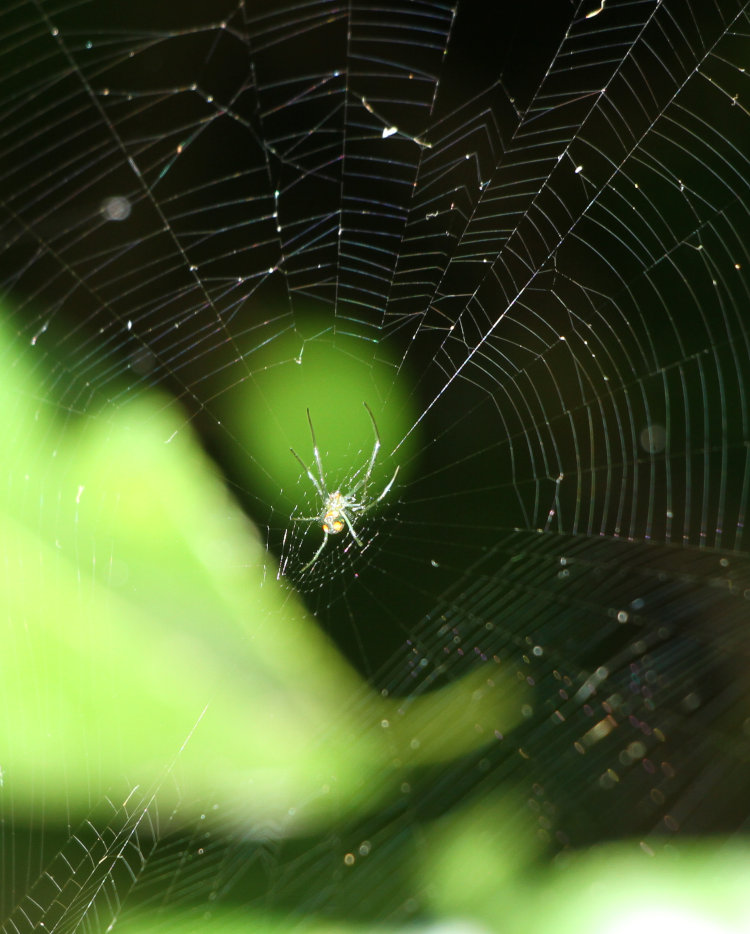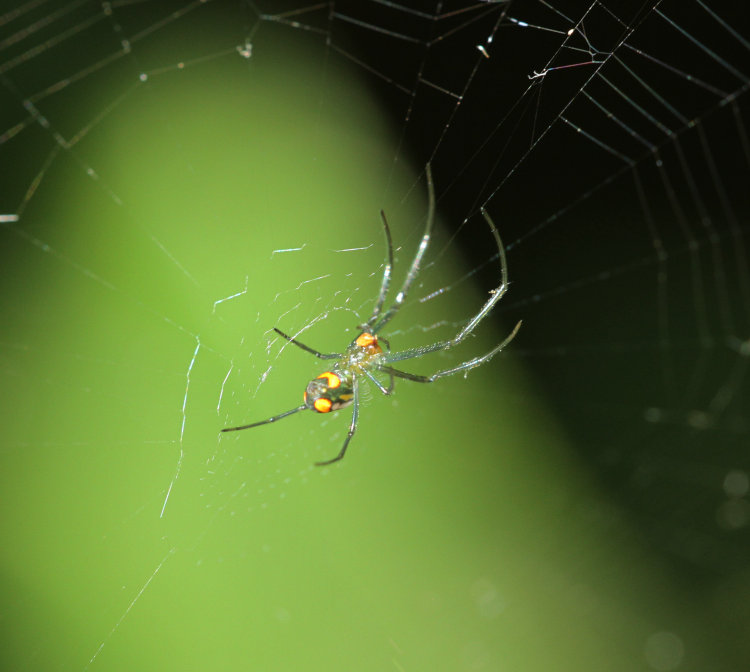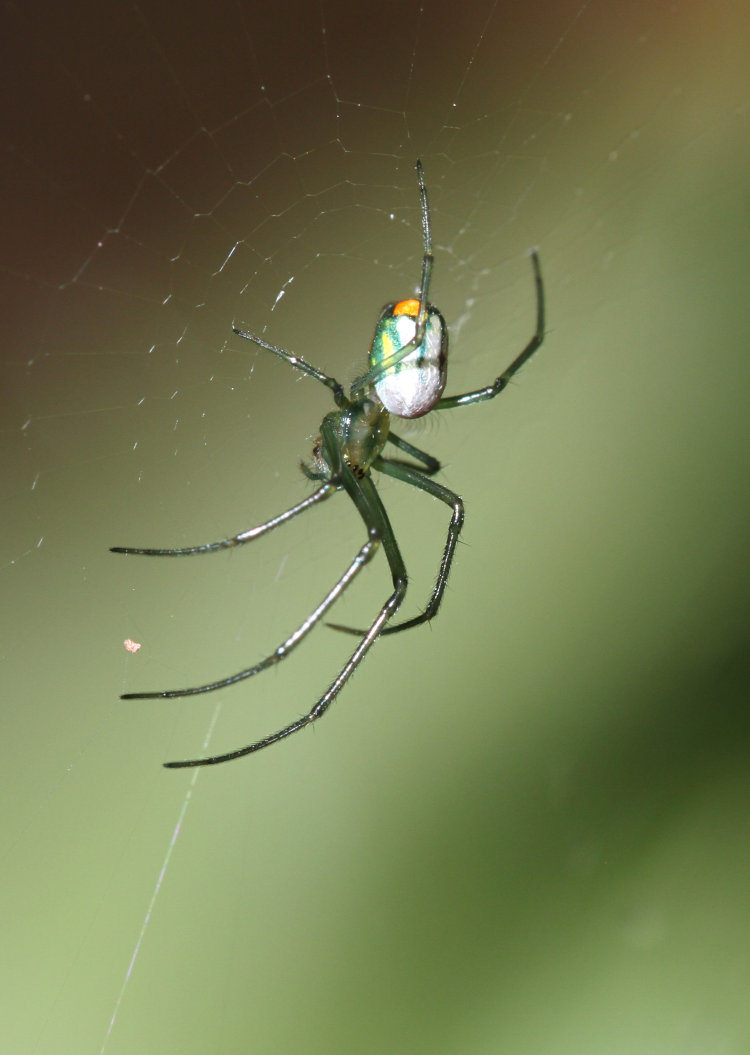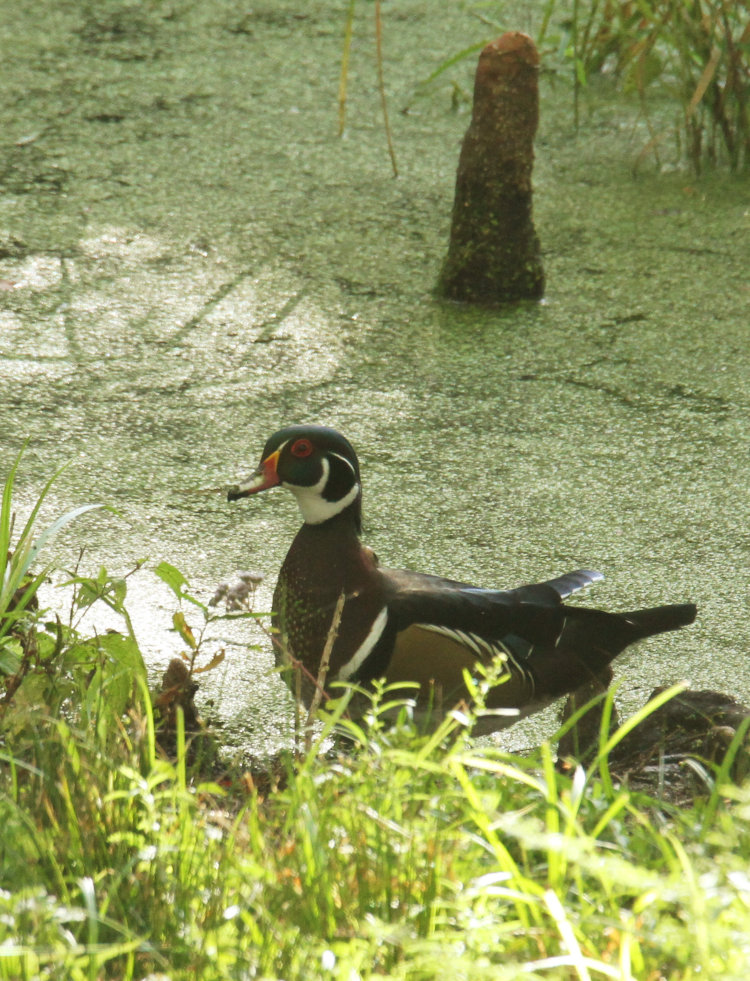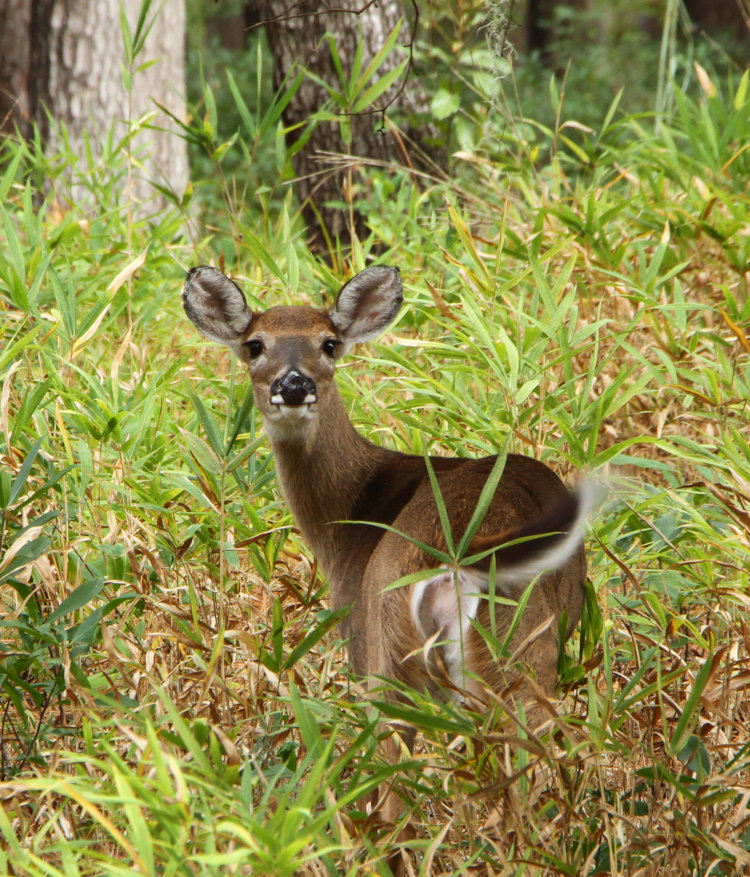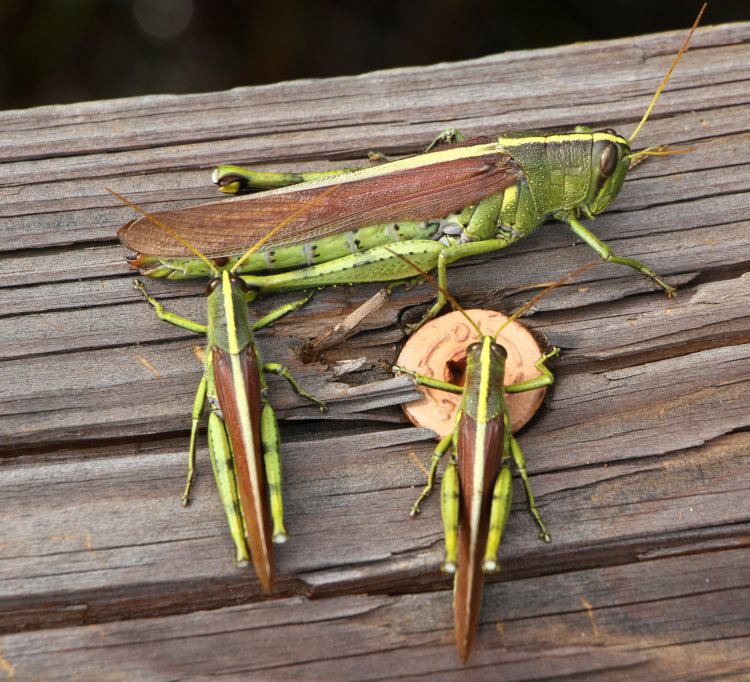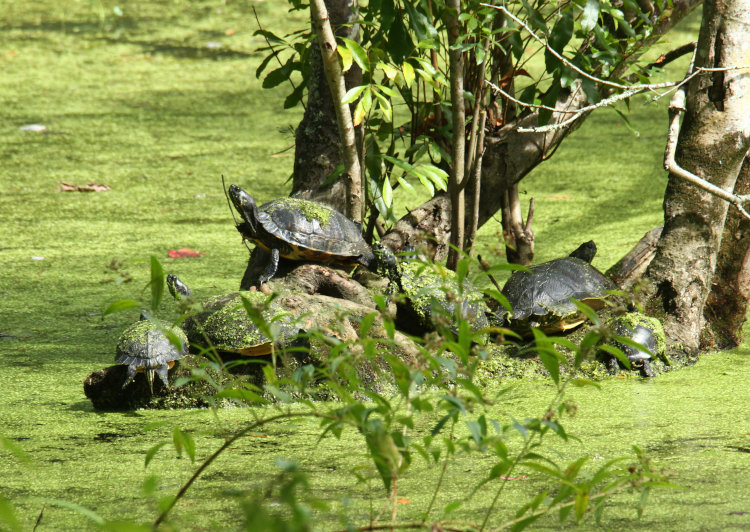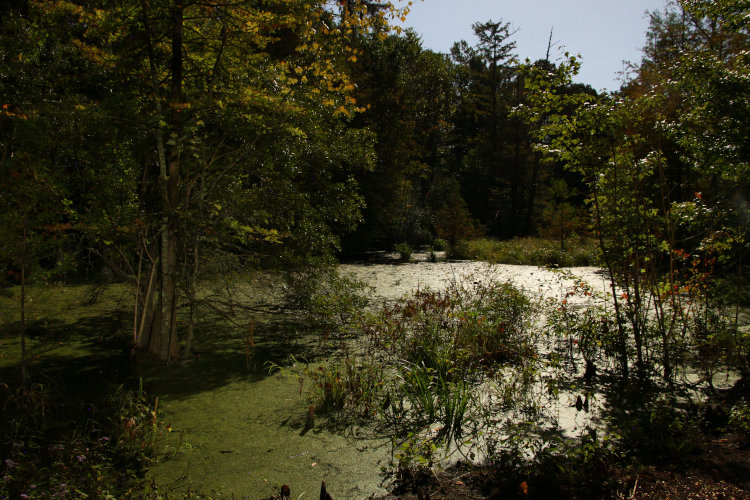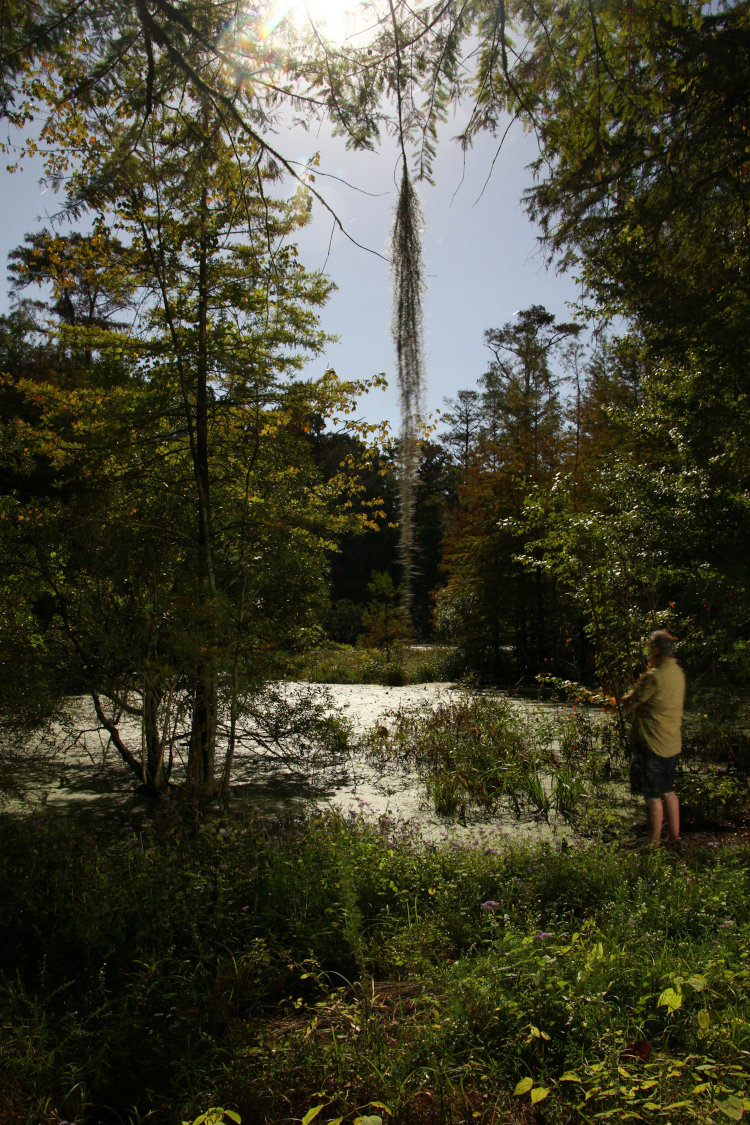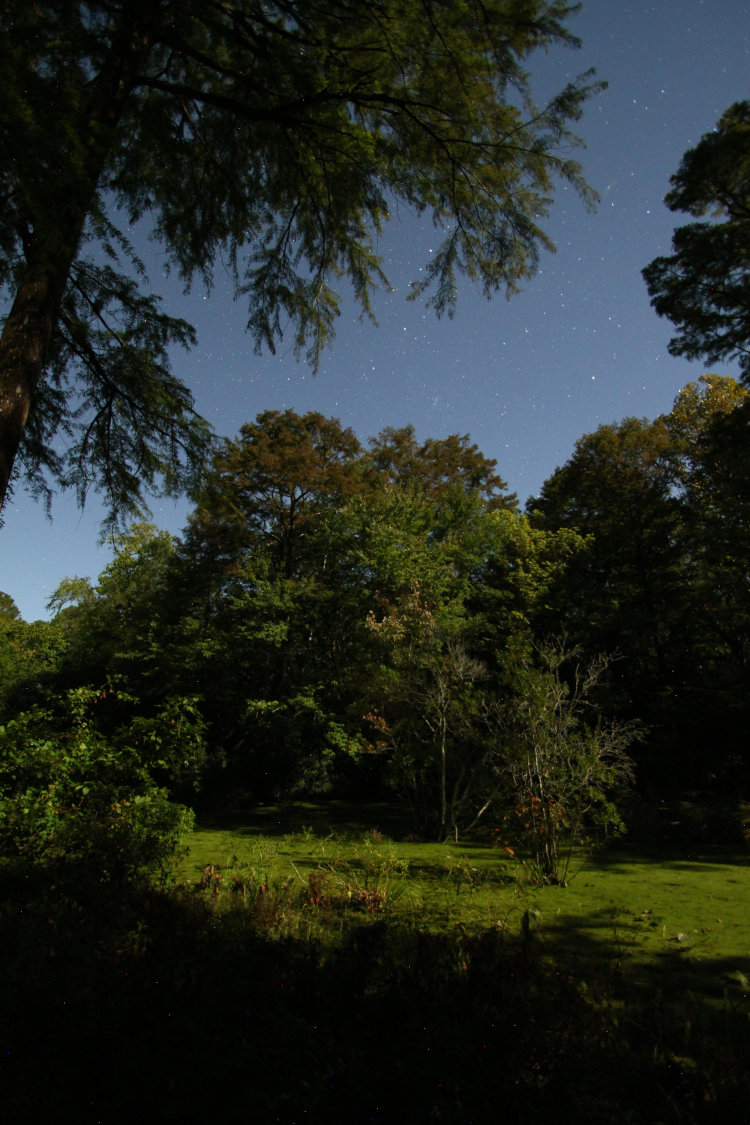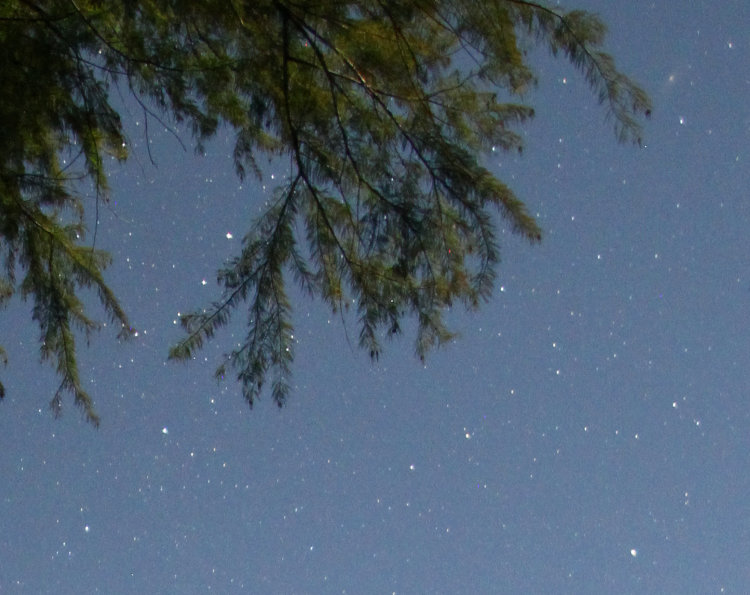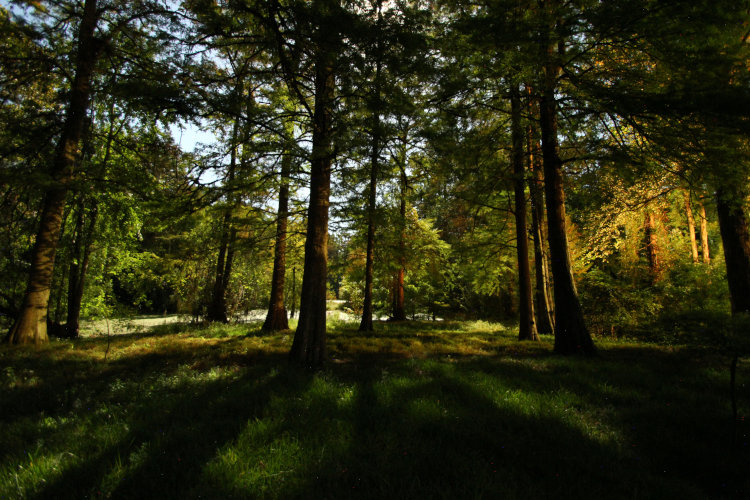I mentioned earlier that the Orionids meteor shower is supposed to peak soon, while right now, comet C/2025 A6 Lemmon is brightening and visible just after sunset, naturally to the west. We had perfectly clear skies on Saturday night, so I decided to try my hand at both, beginning with the comet.
[A note about comet names: They start with ‘C’ for comet, then the year discovered. That’s followed by the one-letter abbreviation for the observatory (or group thereof) used to make the discovery, in this case the Asteroid Terrestrial-impact Last Alert System (ATLAS,) a collection of five separated telescopes used in conjunction to detect asteroids of potential hazards to Earth. Since this is the sixth such comet detected by ATLAS in 2025, it has an A6 designation. This is followed by the common name, often the astronomer that made the discovery, but in this case the Mount Lemmon Survey, one of the organizations that examine the data from ATLAS.]
I made a couple of small mistakes in heading out for the narrow window between when it would be dark enough to see the comet, and it dipping below the horizon. The first was, I didn’t take note of the most visible stars nearby to orient with, and the second was, I didn’t take my old smutphone, which actually has a working compass; for some reason, my current one does not include such a thing (and good luck finding any list of specs, anywhere, that tells you what’s included and excluded before purchase.) So I knew my rough coordinates but not a precise orientation.
I was also working with the Tamron 150-600 lens and not a telescope, which would do a much better job if a) I had the tracking motor operational, and b) I had a decent way to attach a camera to it. I fought with the tracking motor for days last year, never quite understanding the controls or getting it working properly, and also found that the eyepiece mount for the scope stands off a camera too far for it to properly focus – I’d need to specially adapt a digital sensor to work properly. This is a large and likely frustrating project that I simply keep avoiding because I’m not a masochist.
But the skies definitely seemed quite clear at twilight.
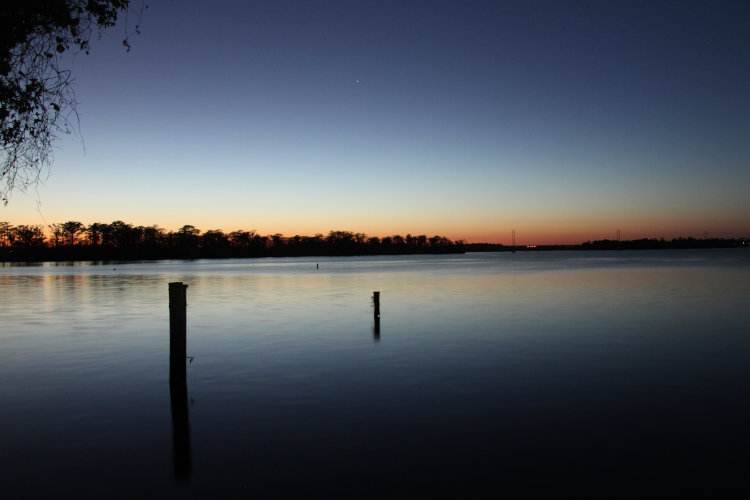
Right at the horizon, the haze is building a bit, but even with this light there’s a star visible already (high center,) a good sign. After a moderate wait, I started my search.
I was also doing test shots for focus and exposure times, and one of my test subjects kept showing a curious artifact:
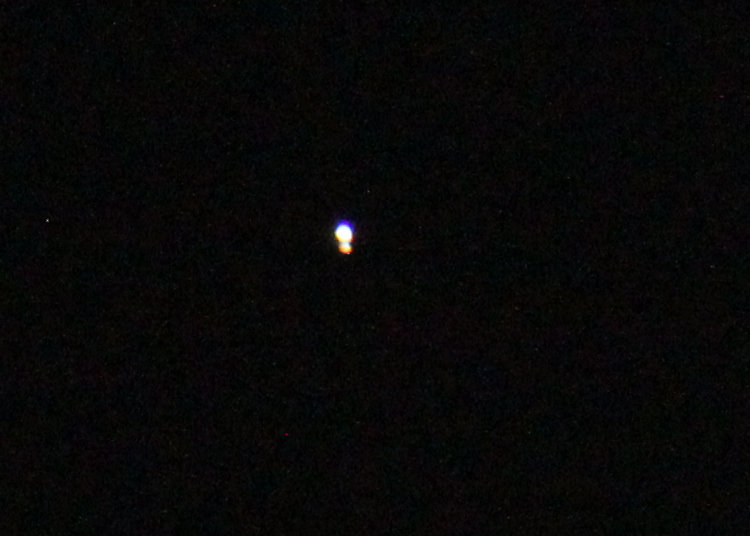
This is 1/10 second at f6.3, ISO 6400, knowing that I’d want the shortest exposure possible to keep the motion from showing, especially looking almost due west. But that secondary image below kept appearing, not really looking like a defocused image or artifact, and it wasn’t until I returned home that I determined why: it really was a double-star.

Stellarium had the goods. It was Cor Caroli, and it didn’t even show as a double star in Stellarium until zoomed way in, but I managed to capture a hint of the spectral differences between the two stars. Note, too, that’s it’s only a double star from our perspective, the two being separated by roughly 29 light years.
The other bright point in the sky always showed a noticeable disc shape in my images when I zoomed in on the preview screen, leading me to believe it was Mars.
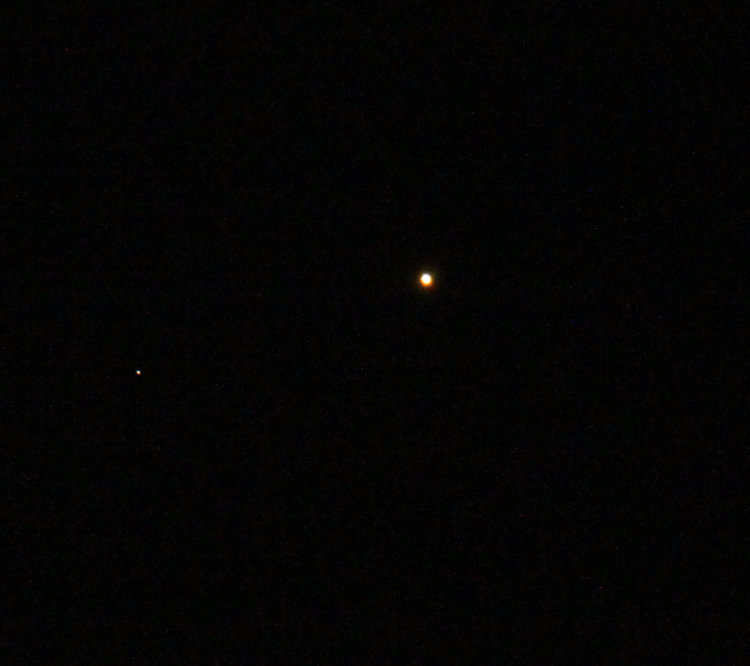
The shape is likely only due to over-exposure, though. I noticed in the viewfinder that the target was scintillating wickedly, which is something not typically seen on the planets, but none of the stars should resolve as a disc, either. I did a test to capture this scintillation, only the second time I’ve done this, and it came out much better than expected.
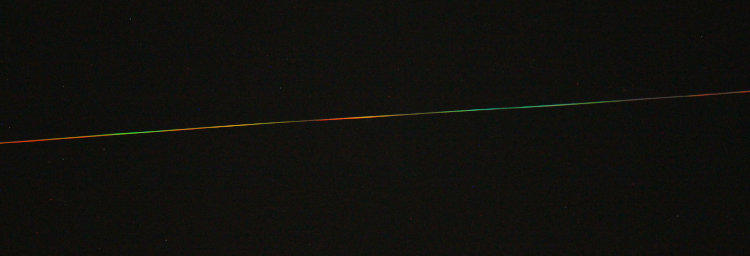
To get this, I loosened the panning lock and rotated the tripod head until the target was just out of the frame, then locked the shutter open for a few seconds while I panned across, smearing the target entirely across the frame. The spectrum that this produced was fantastic, really showing off the colors and no longer looking ‘reddish.’ This was not Mars, but Arcturus (magnitude 0.15, so actually brighter than Mars at the moment, which is quite dim,) again determined once I got back home.
Not locating the comet or anything that looked promising, I began doing several time exposures in the rough direction, hoping to stir it up that way. And one of the things that I stirred up were satellites – really, a lot of them.
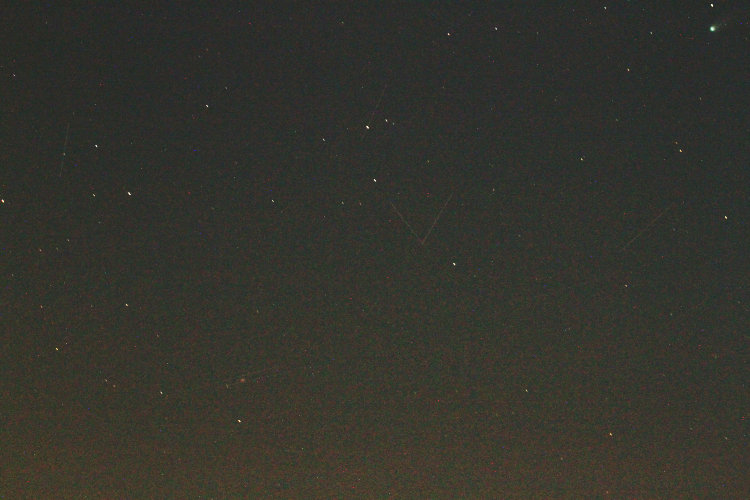
I enhanced this six-second exposure (again, f6.3, ISO 6400) to bring out the trails a little, though the two crossing right in the center should be visible enough; there are actually eight satellite trails visible in the frame, mostly because this was soon after sunset in the western sky and the satellites were high enough to still be reflecting sunlight.
And though I didn’t realize it at the time, I caught the comet, too, up there in upper right corner. A couple of frames later on, I did spot it in the preview, zoomed in slightly here.

Now located properly, I could set about trying to get a detailed shot. I still couldn’t see it by naked eye, and even knowing where to look in the viewfinder at 600mm it was barely visible, but I could frame it at least.

This is a seven-second exposure, cropped a lot tighter now, and obviously way too long to be distinct, but at least there’s clear evidence of the coma and tail, and I even captured the greenish color.
I did a few frames at much shorter times, as well, but the tail about vanishes.

Still a hint of motion blur in there at a mere one-second exposure, and only enough coma to distinguish this as a comet. I also shot a few frames in RAW mode too, to see if that edge would allow more detail to be coaxed out in editing, but nada. Really, the only solution is by tracking to counteract the motion of the Earth’s rotation and keep this smearing out of the frame (though I admit I haven’t tried image-stacking software to combine multiple exposures together, a common technique of astrophotographers and astronomers.)
[A note about this: Since the motion blur/trails are being caused by the rotation of the Earth, a tracking platform has to rotate the opposite way, at the same speed, aligned on the same axis – this means celestial north, or aligned precisely with Polaris, the north star. It doesn’t matter where the camera or scope is pointing, as long as the mount that it’s on is rotating the correct way. This means being able to see Polaris clearly, or precise altitude/azimuth alignments otherwise, though for a ten- to sixty-second exposure, it probably doesn’t have to be too precise. It’s still fussy to set up, and that’s if you know the motor is working properly – I spent all that time last year never getting the motor to act the way that it should.]
That was enough messing about after the comet, which I knew I wasn’t going to improve upon that night. But later on, back home, I was burning off a bunch of fallen branches and debris and decided to get the camera out again, to play with the fire and also try for Orionids meteors.
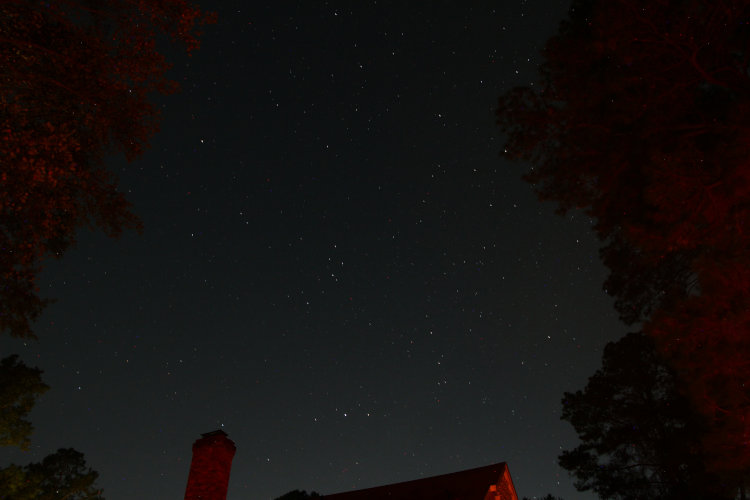
I purposefully framed it so the house and trees were peeking into view at the edges, lit by the fire. That diamond in the center is Delphinus, which means that the Milky Way is off to the right, mostly obscured and with too low an exposure to bring out distinctly. Not long afterward, I had re-aimed and added some branches that still had drying cypress needles on them to produce some sparks for light trails.
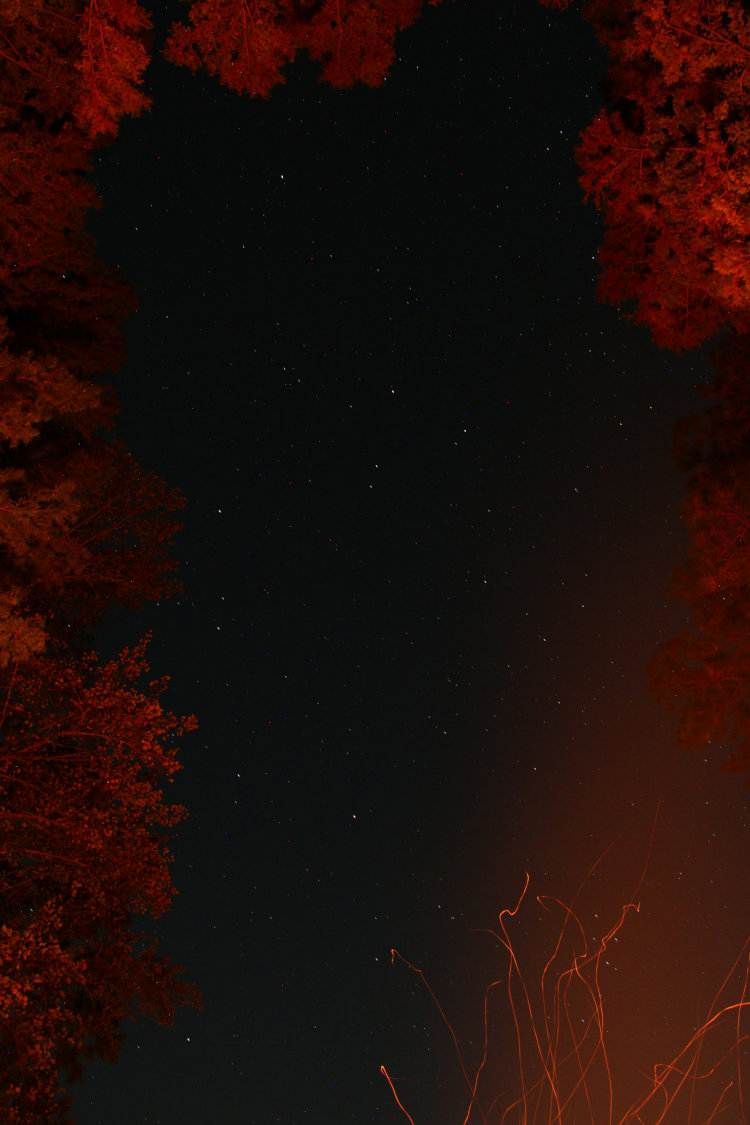
I would have really liked a nice fireball Orionid meteor to have streaked through, to make a solid composition, but noooo. This is nowhere near Orion, but Orion is simply the radiant, where the majority of meteors seem to originate from, though they can appear anyplace in the sky, and in only one shower/storm did I notice a distinct tendency to come from the radiant (Leonids in 2001, and only right at the peak hours.)
By the way, I was watching the sparks, and they were very short-lived, winking out while still high in the air, so little risk of igniting anything else, but I was also out there long enough to monitor things anyway.
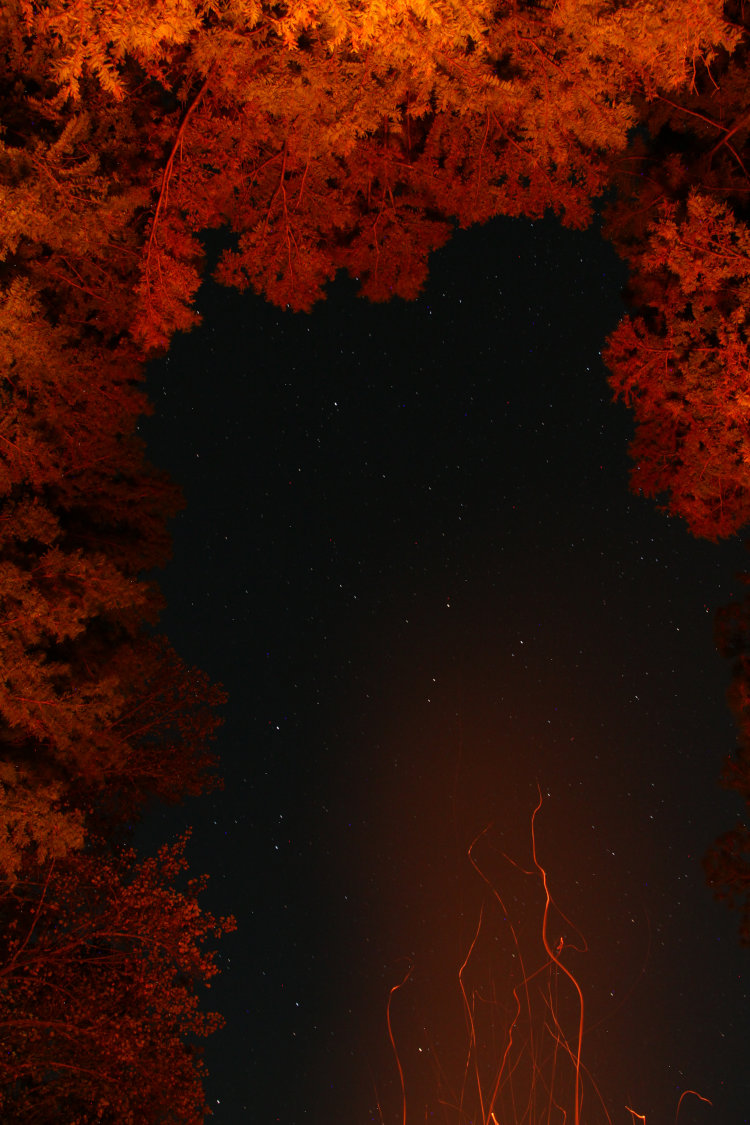
Like doing trails of car lights on the road, there’s a knack to capturing fire sparks; as you can see here, the smoke also catches the firelight to an extent, and it was easy to aim too low to overwhelm the frame with sparks, making the background stars inconsequential – I have several frames like that. The wind conditions were practically nonexistent, another reason that I chose Saturday night for the fire. Also – since I ran afoul of this – get focus pinned down and leave the lens on manual, otherwise the camera is liable to hunt in the darkness and produce defocused light trails.
Now, achieving sharp focus? That can be really tricky, especially depending on the lens. For a shorter focal length/wider angle, usually it’s not too crucial, since the lens will hit hyperfocal distance easily and even faintly out-of-focus stars are small enough in the frame not to look bad; this becomes a lot harder with telephotos lengths, like the comet earlier in the evening. Generally, I pick the brightest star I can find, or occasionally the anti-collision lights of a radio tower over a kilometer off, to focus upon manually, then do a test exposure and chimp on the image afterward, zooming in tight to see how sharp the light is (the moon also works in this regard.) Once satisfied, I endeavor not to even bump the focus ring. This technique is a hell of a lot harder with a zoom lens that doesn’t have constant focus, meaning that as you rack the focal length in or out, the focus actually changes, making it impossible to go tight to focus and then back off to frame usefully; in such cases all you can do is focus at the focal length that you intend to use.
Last one:
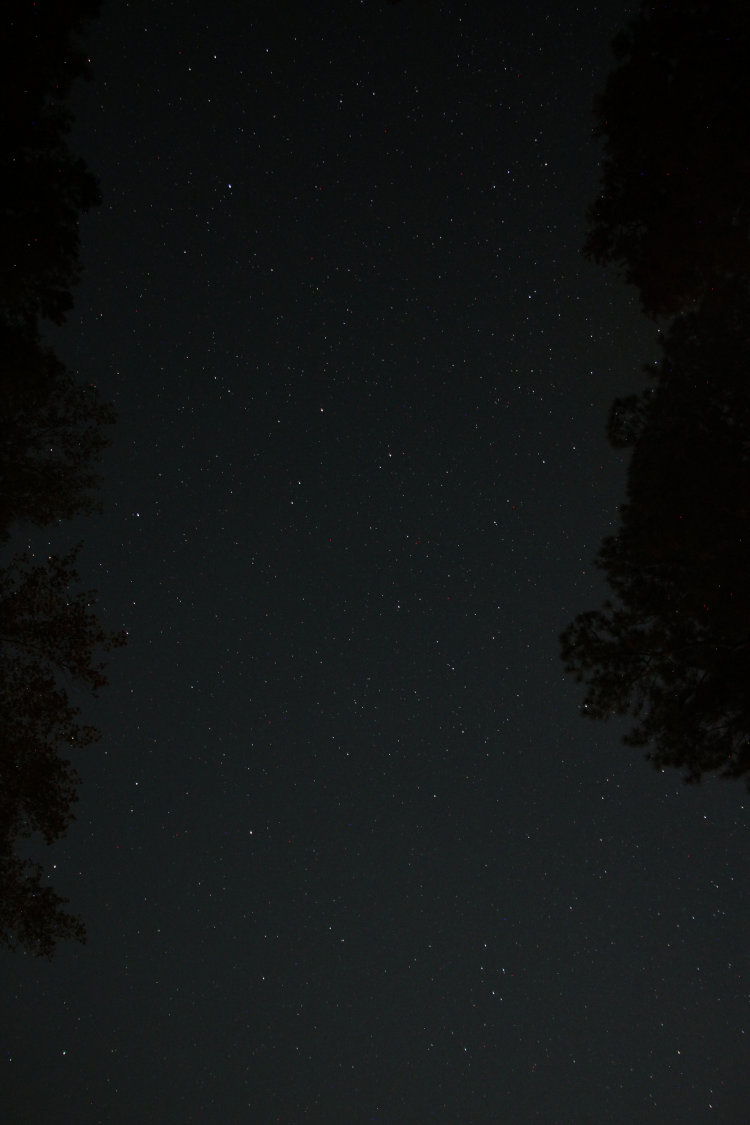
By this point I’d shifted and re-aimed and was trying solely for meteors, of which I (as usual) caught absolutely none. This is pretty close to centered on Pegasus, so high in the west-southwest sky; the Milky Way is obscured to the right, and Saturn hidden behind the trees to the left. Pretty good array of stars in there, and short enough exposures (10 seconds, f3.5, ISO 1600) to prevent visible star trails.
Conditions last night were scattered, and the forecast for later in the week, as we hit peak, are not encouraging, so this might have been the only chance I had for meteors, for days at least. Not that it typically matters anyway…




















































